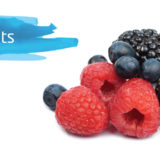
It is not the passage of time that ages us, it is the accumulation of environmental stress, physical stress and emotional stress that breakdown our bodies into the condition we call aged. The aging process is much like the rusting of a car or the rotting of fruit; for example when you cut an apple and leave it on the counter for a while, it starts to turn brown. That rusting or fruit spoiling is called oxidation and our bodies go through the same process. The antioxidants in certain foods help protect us from Free Radicals that attack our cells membranes and cause this “Oxidation” that ages us by destroying our tissues.
Here’s some of the things free radical damage can do:
1. Impair cells ability to transport nutrients into the cell and it dies without replacing itself.
2. Impair the cells ability to transport waste products out of the cell, thus the cell can become ‘strangled’ by it’s own waste, which can result in the cell dying before replacing itself.
3. Damages the cells DNA so that instead of the cell being replaced by another healthy daughter cell, it is replaced with a mutant cell that does not function properly.
4. Damage the lysosomal sac and release deadly lysosomes, which are enzymes that destroy other cell components. This leaves the cell devoid of working parts and the body becomes one cell older.
5. Fuse proteins together in such a fashion that the proteins do not function properly. This can damage a cell so that it does not perform and does not produce a healthy replacement.
6. Form byproducts. These residues accumulate over time and interfere with all function.
The most damaging aspects of free radicals is their effect on a cell membrane. Curbing free radical damage has an age-retarding effect, It can improve the quality of life as well as the length. Scientists have estimated that each cell in your body suffers from 10,000 free radical ‘hits’ each day. Free radicals not only damage cell membranes, cellular proteins, DNA, RNA, and other essential body components, they also disrupt normal bio chemistry that may lead to many diseases. Free radicals may worsen existing conditions, antagonize the healing process and create an environment for pre-dispositioned (hereditary) diseases to set in.
So, what is the solution to free radical damage? A substance that slows the oxidation (or cell death) of free radicals is an antioxidant. Antioxidants, also protect other substances against damaged caused by oxygen. Scientists estimate that there are over 4000 antioxidants nature provides to help protects us. Below are some of the most common ones as well as most powerful.
Resveratrol– One of the most powerful and found in red wine.
Polyphenols– Found in berries, tea and coffee
Quercetin– Apples
Vitamin C– Fruits
Co Enzyme Q10– Body stops making it after age 40
Omega 3 Fatty acids– Fish
Lycopene– Found in tomatoes
Beta Carotene– Found in carrots
Lutin– Found in spinach
One food in particular has received a lot of attention lately. The Acai berry, found in the rain forest of Brazil. It is in a particular class of antioxidant flavonoids called anthocyanins. Anthocyanins protect many departments of the human body. It is believed to be one of the most potent antioxidant containing food items in the world. Not only is it high in flavonoids but it also includes amino acids as well as omega 3 fats.
As always be sure to check with your doctor before taking any supplements, especially if you are under their care for any medical condition.





